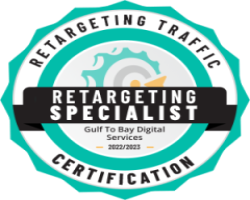Visualizing Future Cityscapes with Scale Models in Dubai
Dubai is a global leader in futuristic urban development, constantly pushing the boundaries of architecture and design.

Dubai is a global leader in futuristic urban development, constantly pushing the boundaries of architecture and design.
Conceptual architectural scale models play a vital role in this transformation, offering a tangible way to visualize ambitious projects before they are built. These models help architects, investors, and city planners see how new structures will integrate into the cityscape, ensuring that futuristic designs align with Dubai’s vision for innovation and sustainability.
The Importance of Architectural Scale Models in Urban Planning
Before a futuristic cityscape can take shape, developers need a clear visual representation of their ideas. Conceptual architectural scale models Dubai provide an accurate and detailed preview of how proposed buildings, roads, and public spaces will interact with the existing environment. These models help in:
- City Planning and Infrastructure Development – Scale models showcase the relationship between skyscrapers, transportation hubs, green spaces, and public areas. They allow planners to assess traffic flow, accessibility, and connectivity between different parts of the city.
- Real Estate Marketing and Investment – Investors and buyers can better understand the scale, aesthetics, and functionality of a project when they see a physical model rather than just 2D blueprints or digital renders.
- Regulatory Approvals and Stakeholder Communication – Government authorities and project stakeholders can review models to ensure that designs comply with regulations and align with Dubai’s urban development goals.
3D Printing and Digital Advancements in Scale Models
Traditional architectural models were handcrafted using materials like wood, foam, and acrylic. However, modern advancements, particularly 3D printing and digital modeling, have revolutionized the industry. In Dubai, many firms now use 3D printing technology to create highly detailed architectural models quickly and accurately. These models can:
- Show intricate designs and futuristic building facades with precision
- Include interactive elements such as LED lighting and augmented reality (AR) features
- Be updated or modified easily to reflect design changes
Digital technology has also introduced virtual and mixed reality models, allowing developers to combine physical models with digital projections. This enhances the visualization experience, offering a more immersive look at Dubai’s future cityscapes.
Showcasing Sustainability in Future Cityscapes
Dubai is committed to sustainable urban development, and architectural scale models help demonstrate how futuristic designs incorporate eco-friendly features. Some ways models highlight sustainability include:
- Green Roofs and Vertical Gardens – Many models showcase high-rise buildings with rooftop gardens and green walls to promote urban biodiversity.
- Smart Energy Solutions – Scale models integrate solar panels, wind turbines, and energy-efficient lighting to illustrate Dubai’s sustainability goals.
- Water Conservation Features – Models of futuristic developments display innovative water recycling systems and desalination plants to support Dubai’s water sustainability efforts.
By integrating these elements into conceptual models, developers can effectively communicate Dubai’s commitment to a greener future.
Bringing Futuristic Mega Projects to Life
Some of Dubai’s most iconic and ambitious projects were first visualized through conceptual architectural scale models. These models have helped bring groundbreaking developments to reality, including:
- Dubai Creek Tower – This upcoming skyscraper, set to surpass the Burj Khalifa in height, was first introduced as a scale model, giving architects and investors a clear idea of its slender, futuristic design.
- The Museum of the Future – This landmark was meticulously designed using scale models to perfect its futuristic torus-shaped structure before construction.
- Palm Jumeirah and The World Islands – Before these artificial islands were built, large-scale models helped engineers refine the design and layout of these ambitious waterfront projects.
Dubai’s dedication to innovative cityscapes is largely driven by these scale models, ensuring that each project seamlessly fits into the evolving skyline.
Enhancing Investor Confidence and Public Engagement
Investors and stakeholders need a clear vision before committing to a large-scale project. Architectural models help build confidence by presenting a realistic and detailed preview of future cityscapes. Some ways they enhance engagement include:
- Investor Presentations – High-quality models make it easier for developers to secure funding by providing a visually compelling representation of a project’s potential.
- Public Exhibitions and Marketing – Developers display large-scale models in sales centers and exhibitions to showcase upcoming developments, attracting potential buyers and residents.
- Government Planning and Approval – Dubai’s authorities rely on models to evaluate urban projects before granting approval, ensuring they align with smart city and sustainability goals.
By using conceptual architectural scale models, Dubai can efficiently plan its urban future while engaging key stakeholders in the process.
The Future of Architectural Scale Models in Dubai
As Dubai continues to evolve into a smart and sustainable city, the role of architectural scale models will only grow. Future advancements will likely include:
- AI-driven model designs that adapt to real-time data and simulations
- Holographic city models offering a fully interactive experience
- Integration with digital twin technology for more accurate urban planning insights
Conceptual models will remain a crucial tool for transforming visionary concepts into reality, helping Dubai maintain its reputation as a leader in futuristic urban development.
Final Thoughts
Conceptual architectural scale models are an essential part of Dubai’s journey toward a futuristic cityscape. They allow architects, investors, and city planners to visualize large-scale projects, refine designs, and ensure seamless integration with the existing urban environment. With the rise of 3D printing, smart technologies, and interactive models, Dubai’s approach to architectural visualization is more advanced than ever.
As the city continues to innovate, conceptual scale models will shape the next generation of urban development, making Dubai a global leader in future-ready architecture.
What's Your Reaction?





















